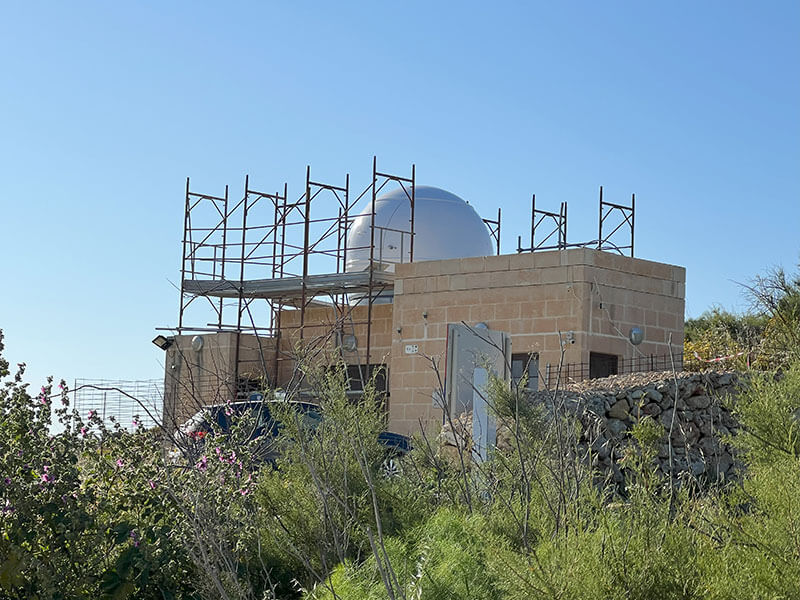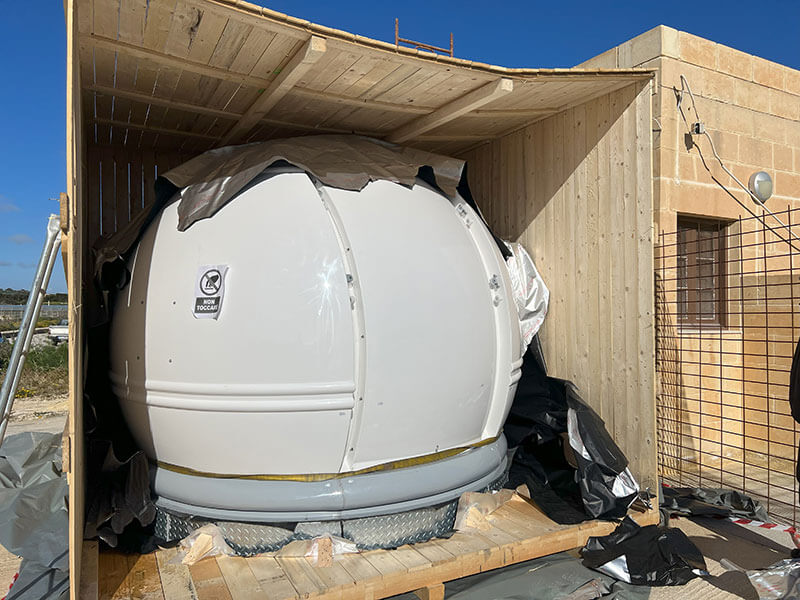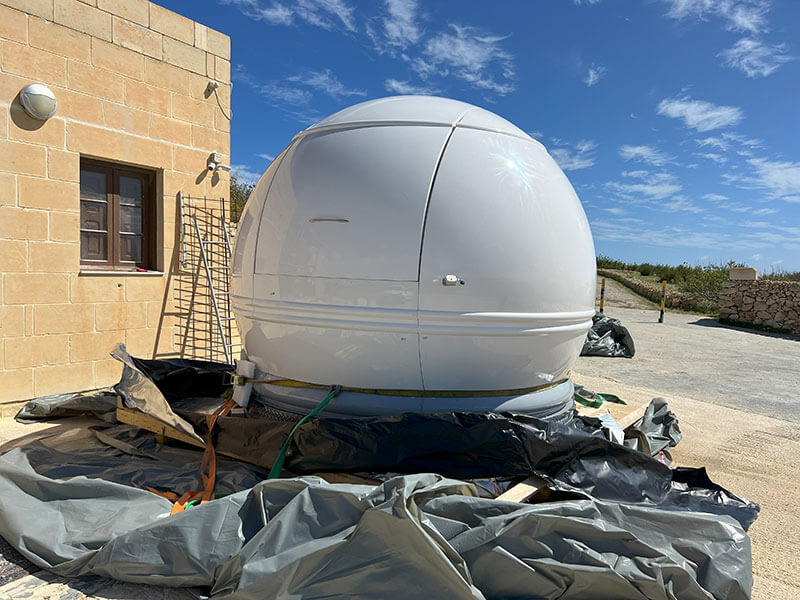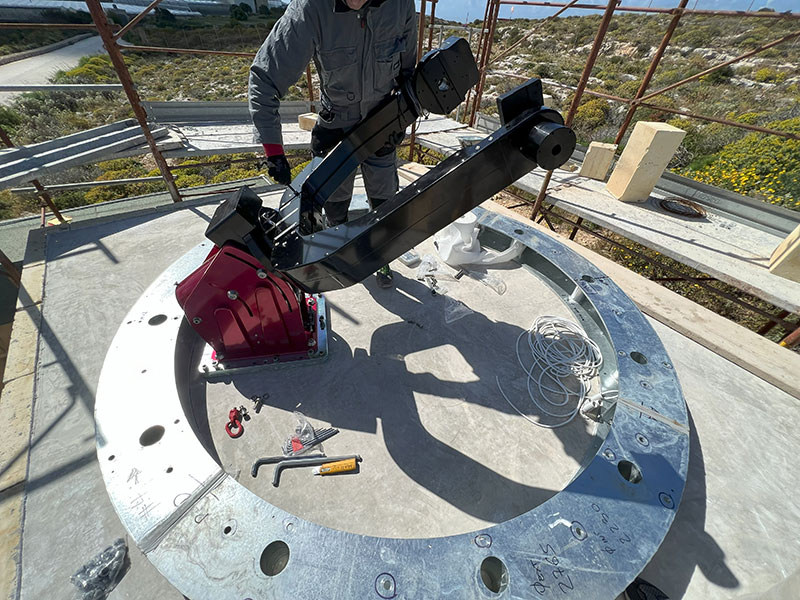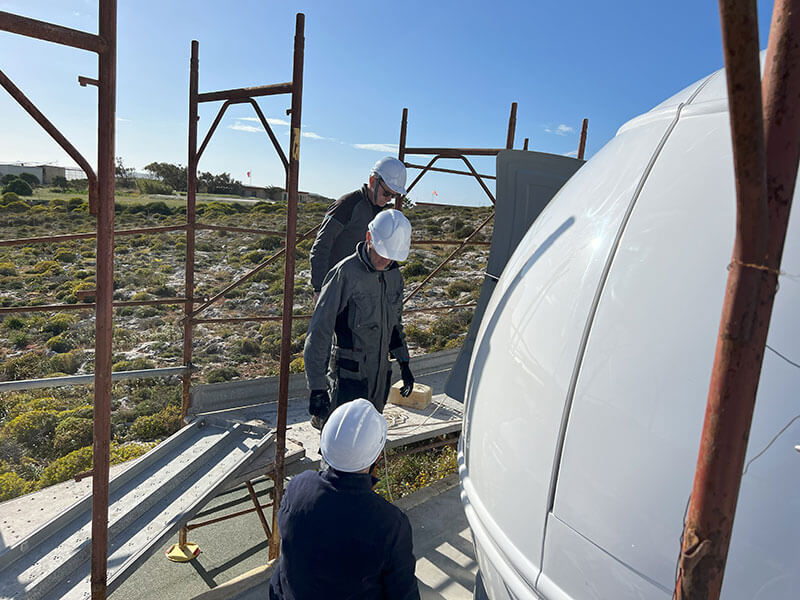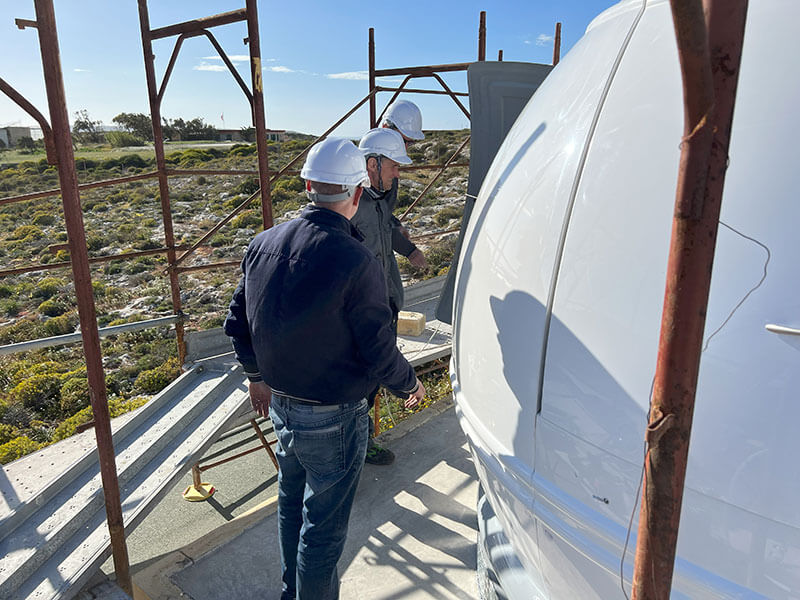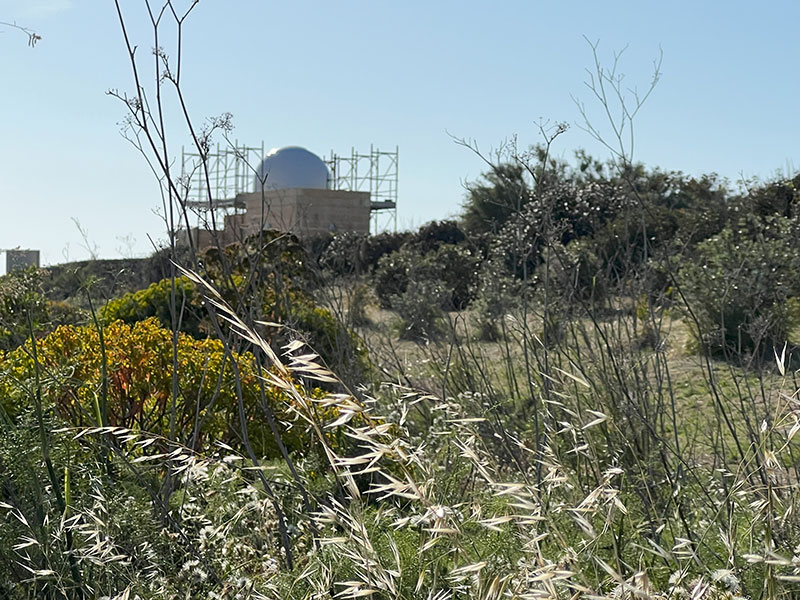The EcoGozo Directorate in collaboration with the Institute of Space Sciences and Astronomy (ISSA) of the University of Malta, have installed Malta’s first National Optical Astronomy Observatory at il-Qortin Ta’ Sopu, Nadur.
Following a night-sky brightness study that was led by researchers within the Department of Physics and ISSA1, the northeast coast of Gozo was found to be adequate to host an astronomical observatory, specifically the site adjacent to the Ta’ Sopu family park. This site satisfied a number of requirements; most importantly, it exhibited a reasonably dark skies, especially towards the north.
Such an observatory will be used both for scientific research purposes and as a training facility for physics and astrophysics students. It will also serve to raise scientific awareness amongst the general public through outreach activities. There are numerous valuable scientific projects that can be carried out with such an observatory, most especially time-series photometry, including observations of variable stars and derivation of asteroid rotation periods. Such projects would also serve as solid training ground in observational astronomy for undergraduate and postgraduate students, whereby not only would they be gaining hands-on experience in astronomical imaging and data reduction, but also contributing valid scientific results.


